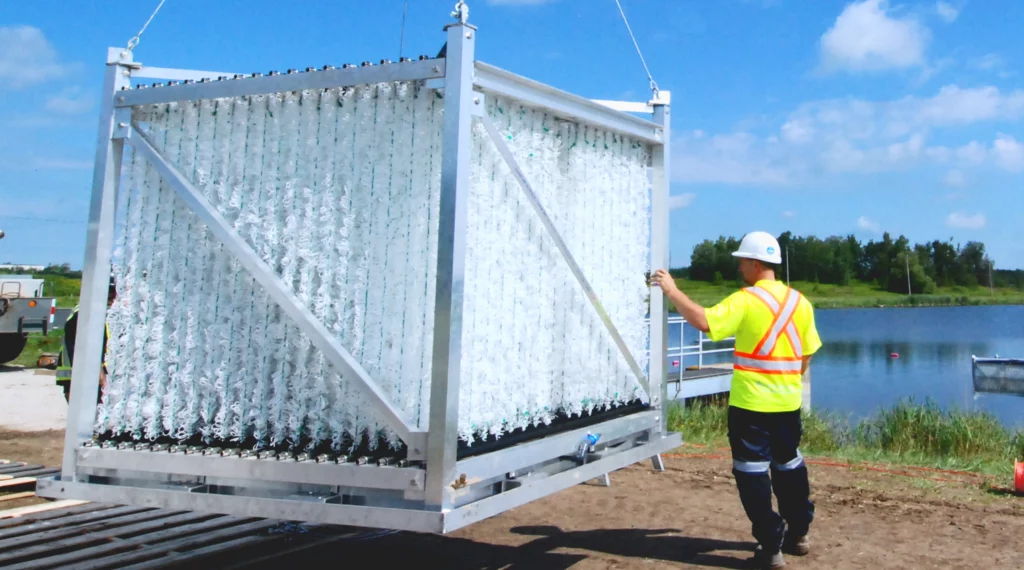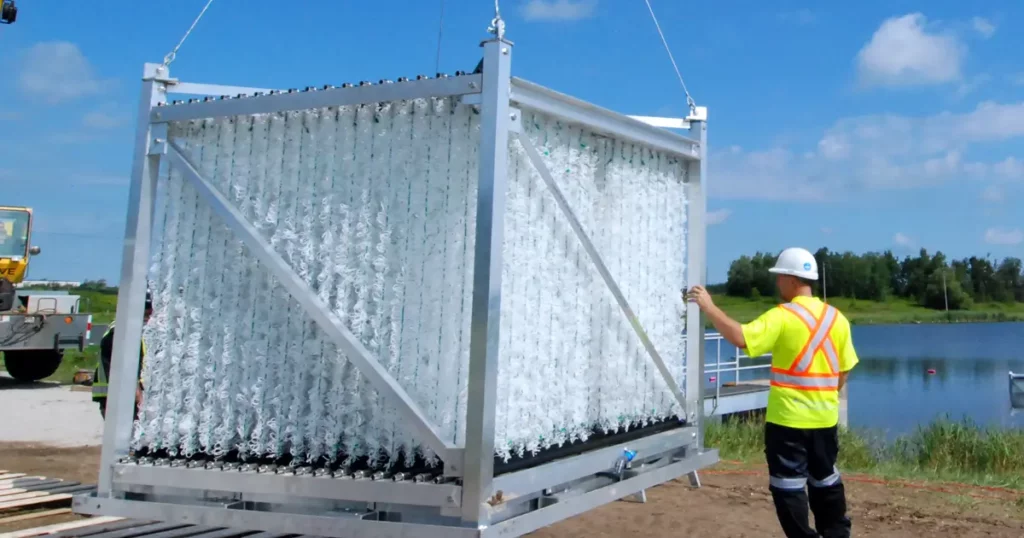
ARTICLE
Top 5 things to consider for a lagoon upgrade
Wastewater lagoons provide simple, reliable and relatively low-cost treatment for small and medium sized communities. In Canada and the US, there are nearly 10,000 municipal lagoon systems and many more when industrial, agricultural and commercial lagoon systems are included.
But eventually a community needs to improve the treatment capacity and performance of its lagoon system to accommodate growth, meet more stringent regulatory requirements, or both. We’ve compiled a list of important considerations to help you plan a lagoon upgrade that can provide the performance and capacity your community needs at affordable capital and operating costs.
1) Post-lagoon or in-situ treatment process
Moving-bed and submerged-bed systems typically add tanks or in-ground cells to accommodate the new treatment process. Not only does this add to the plant footprint, it also requires additional equipment such as tanks, pipes, pumps and blowers, which can substantially increase capital costs. In-situ systems can be installed directly into the lagoon to enhance treatment capacity without expanding footprint or adding a large amount of supporting equipment.
2) Energy demand
Blowers can provide lots of air quickly, but the equipment is costly and has high energy demands. Some systems such as MBBR also rely on coarse bubbles from blowers to circulate the carrier media and keep it in suspension, in addition to supplying air to the microbial population. But larger bubbles are also less efficient at transferring oxygen to microbes – much of the air simply bubbles up and out of the process tank. Instead, consider a system that uses low-energy compressors and micro-bubble aeration for significantly higher oxygen transfer and lower, more efficient energy usage.
3) Ease of operation
One of the big advantages of wastewater lagoons is that they require little operator attention compared to more advanced mechanical treatment plants. In-situ systems can also share this advantage since they align well with the way wastewater lagoons are typically managed and don’t add complexity or additional processes to manage.
4) Capital and long-term operating costs
Tanks, media beds, blowers and other equipment can all add capital and operating costs to a lagoon upgrade. Alternatively, in-situ systems use the existing lagoon cell, which can reduce capital costs by as much as 50%. Energy demand for in-situ systems can also be up to 50% lower by eliminating the need to pump wastewater to sidestream process and replacing blowers with low-energy compressors.
5) Customizability
Like any wastewater system, lagoons can experience variable loading, changing flows, upset and more. Upgrade technologies should be easily adaptable to respond to short- and long-term operating conditions, including anticipated changes to population and regulatory requirements. To achieve this, consider modular systems that can be brought online as needed or easily expanded to accommodate the needs of the community or business.
BioCord Reactors check all the boxes
BioCord® Reactors biological nutrient removal gives lagoon operators a simple and efficient way to dramatically increase capacity and performance of a wastewater lagoon or conventional activated sludge plant without expanding footprint.
This low-energy, self-regulating process is ideal to help a plant achieve up to 99% ammonia reduction in difficult treatment conditions such as during cold weather or when experiencing high-strength or variable loading.
The fixed-film, modular process is like a condominium for bacteria on which preferred, naturally occurring bacteria can thrive. BioCord reactors offer a flexible, modular design that can be customized to fit virtually any secondary treatment process and handle anticipated flow and loading parameters.







